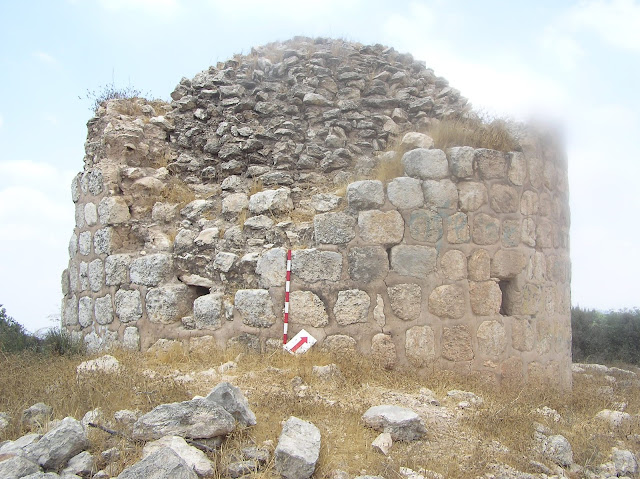Antiquities 1875 — Antiquities of the Orient unveiled. N.-Y., 1875.
Antoine 1847 — Antoine J.G. Le livre d'or des familles, ou La Terre-sainte illustrée. Bruxelles, 1847.
Ariel 1996 — Ariel: Journal for the Study of the Land of Israel — Religion and ritual and graves of Muslim saints in Eretz Israel. 1996. (Hebrew)
Arundale 1837 — Arundale F. Illustrations of Jerusalem and Mount Sinai: Including the Most Interesting Sites Between Grand Cairo and Beirut. London, 1837.
Ashbee 1921 — Jerusalem, 1918–1920; being the records of the Pro-Jerusalem Council during the period of the British military administration. Ed. by C.R. Ashbee. London, 1921.
Baedeker 1880 — Baedeker K. Palästina und Syrien. Leipzig, 1880.
Baedeker 1882 — Baedeker K. Palestine et Syrie: Manuel du Voyageur. Leipzig, 1882.
Baedeker 1894 — Baedeker K. Palestine and Syria: Handbook for Travellers. Leipzig, 1894.
Bahat 1990 — Bahat, Dan. The Illustrated Atlas of Jerusalem. 1990.
Barclay 1857 — Barclay J. T. The City of the Great King: Or, Jerusalem as it Was, as it Is, and as it is. London, 1857.
Baudot 1896 — Baudot V. Au pays des turbans: Grèce, Syrie, Égypte. Paris, 1896.
Beaugrand 1700 — Beaugrand F. Relation nouvelle et tres-fidelle du voyage de la Terre Sainte. Paris, 1700.
Ben-Arieh 1977 — Ben-Arieh Y. A City reflected in its times / Jerusalem in the nineteenth century: the Old City. Jerusalem, 1977. (in Hebrew)
Benvenisti 2000 — Benvenisti, Meron (2000) Sacred Landscape: Buried History of the Holy Land Since 1948.
Berggren 1828, III — Berggren J. Resor i Europa och österländerne. Vol. III. Stockholm, 1828. (Swedish)
Bertrand 1847 — Campagnes d'Égypte et de Syrie 1798–1799. Par le Général Bertrand. II. Paris, 1847.
Boucher 1722 — Boucher J. Le Bouquet sacré ou Le Voyage de la Terre Sainte. Paris, 1722.
Bourassé 1867 — Bourassé J.J. La Terre-Sainte; voyage dans l'Arabie pétrée, la Judée, la Samarie, la Galilée et la Syrie. Tours, 1867.
Bruyn 1714 — Bruyn C. Voyage au Levant, c'est-à-dire dans les principaux endroits de l'Asie Mineure... Paris, 1714.
Buckingham 1822 I — Buckingham J. S. Travels in Palestine Through the Countries of Bashan and Gilead. Vol. I. London, 1822.
Buckingham 1822 II — Buckingham J. S. Travels in Palestine Through the Countries of Bashan and Gilead. Vol. II. London, 1822.
Burckhardt 1822 — Burckhardt J. L. Travels in Syria and the Holy Land. London, 1822.
Burton 1875 — Burton I. The inner life of Syria, Palestine, and the Holy Land : from my private journal. London, 1875.
Calvary 1921 — Calvary M. Palästina : Bilder von Land und Leben. Berlin, 1921.
Canaan 1927 — Canaan T. Mohammedan Saints and Sanctuaries in Palestine. London, 1927.
Antoine 1847 — Antoine J.G. Le livre d'or des familles, ou La Terre-sainte illustrée. Bruxelles, 1847.
Ariel 1996 — Ariel: Journal for the Study of the Land of Israel — Religion and ritual and graves of Muslim saints in Eretz Israel. 1996. (Hebrew)
Arundale 1837 — Arundale F. Illustrations of Jerusalem and Mount Sinai: Including the Most Interesting Sites Between Grand Cairo and Beirut. London, 1837.
Ashbee 1921 — Jerusalem, 1918–1920; being the records of the Pro-Jerusalem Council during the period of the British military administration. Ed. by C.R. Ashbee. London, 1921.
Baedeker 1880 — Baedeker K. Palästina und Syrien. Leipzig, 1880.
Baedeker 1882 — Baedeker K. Palestine et Syrie: Manuel du Voyageur. Leipzig, 1882.
Baedeker 1894 — Baedeker K. Palestine and Syria: Handbook for Travellers. Leipzig, 1894.
Bahat 1990 — Bahat, Dan. The Illustrated Atlas of Jerusalem. 1990.
Barclay 1857 — Barclay J. T. The City of the Great King: Or, Jerusalem as it Was, as it Is, and as it is. London, 1857.
Baudot 1896 — Baudot V. Au pays des turbans: Grèce, Syrie, Égypte. Paris, 1896.
Beaugrand 1700 — Beaugrand F. Relation nouvelle et tres-fidelle du voyage de la Terre Sainte. Paris, 1700.
Ben-Arieh 1977 — Ben-Arieh Y. A City reflected in its times / Jerusalem in the nineteenth century: the Old City. Jerusalem, 1977. (in Hebrew)
Benvenisti 2000 — Benvenisti, Meron (2000) Sacred Landscape: Buried History of the Holy Land Since 1948.
Berggren 1828, III — Berggren J. Resor i Europa och österländerne. Vol. III. Stockholm, 1828. (Swedish)
Bertrand 1847 — Campagnes d'Égypte et de Syrie 1798–1799. Par le Général Bertrand. II. Paris, 1847.
Boucher 1722 — Boucher J. Le Bouquet sacré ou Le Voyage de la Terre Sainte. Paris, 1722.
Bourassé 1867 — Bourassé J.J. La Terre-Sainte; voyage dans l'Arabie pétrée, la Judée, la Samarie, la Galilée et la Syrie. Tours, 1867.
Bruyn 1714 — Bruyn C. Voyage au Levant, c'est-à-dire dans les principaux endroits de l'Asie Mineure... Paris, 1714.
Buckingham 1822 I — Buckingham J. S. Travels in Palestine Through the Countries of Bashan and Gilead. Vol. I. London, 1822.
Buckingham 1822 II — Buckingham J. S. Travels in Palestine Through the Countries of Bashan and Gilead. Vol. II. London, 1822.
Burckhardt 1822 — Burckhardt J. L. Travels in Syria and the Holy Land. London, 1822.
Burton 1875 — Burton I. The inner life of Syria, Palestine, and the Holy Land : from my private journal. London, 1875.
Calvary 1921 — Calvary M. Palästina : Bilder von Land und Leben. Berlin, 1921.
Canaan 1927 — Canaan T. Mohammedan Saints and Sanctuaries in Palestine. London, 1927.

.jpg)
.jpg)
















.jpg)


.jpg)


.jpg)

.jpg)


.jpg)
.jpg)




.JPG)
.JPG)
.JPG)
.jpg)

